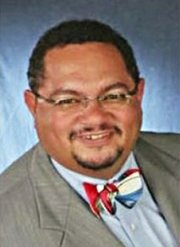INVESTIGATORS are questioning if links exists between the Cancer Centre’s managing director Arthur Porter and a company involved in an alleged fraud case at McGill University Health Centre in Montreal, according to one leading Canadian newspaper.
In an article published last week in The Globe and Mail – one of Canada’s largest circulating national newspaper – it claimed police have traced a company “that is at the centre of a massive alleged fraud” at McGill University Health Centre (MUHC) to a building located in Nassau.
The company in question, Sierra Asset Management has a registered address at a Bay Street building but no operations, The Globe and Mail stated.
It was last month that Dr Porter hit back at “spurious” allegations surrounding his business ventures, and tenure and resignation from MUHC in 2011.
According to Canadian media, the Quebec government recently released the results of an audit that found the MUHC’s planned deficit of $12-million has ballooned to $115-million – a financial state so precarious that the hospital network has been assigned a special overseer to monitor its spending.
Quebec’s anti-corruption task force has also alleged that the hospital network was the victim of fraud in connection with its planned super-hospital.
In November, police charged two former executives at SNC-Lavalin, the engineering firm that was awarded the contract during Dr Porter’s tenure, with multiple criminal charges, including fraud and using falsified documents.
In last week’s Globe and Mail article, they claimed Sierra had signed a contract with SNC-Lavalin in 2009 and the Nassau address registered for Sierra is the same as the office of Compagnie Bancaire Helv�tique (CBH Bahamas).
CBH is reportedly managed by Hermann-Josef Hermanns – “a man Dr Porter knows well,” the Globe continued, as Dr Porter has “alluded in the past” to using Mr Hermann’s bank for his private businesses.
Attempts by The Tribune to reach Sierra Asset Management to question if there are any links between Dr Porter and the company as suggested by The Globe, proved unsuccessful.
Representatives at the building said the company is not housed at that location.
“Apparently we don’t have any company like that under our portfolio,” one employee said.
The Globe also spoke of a man named Jeremy Morris whom the paper said is registered as a principal of Sierra. When The Tribune asked if Mr Morris could be found at that location, another woman said: “I’m sorry I don’t know a Mr Morris.”
The employee maintained she also had no knowledge of Sierra: “I am sorry I am not aware (of Sierra). Whoever gave you that information, you may have to go back to them and get some more details.”
The Globe apparently had the same success. The newspaper noted that in a report ordered by The Globe on Sierra’s activities, that report said, “there is no known operational office for the (company) in the (Bahamas)” despite the operating address being listed as CBH House on Bay Street, according to the report. Last month, Dr Porter denied any culpability for MUHC’s precarious financial state.
He maintained that his resignation from MUHC in 2011 was a deliberate move to develop his interests in The Bahamas, namely the Cancer Centre, after he had satisfied his primary objective of establishing the $1.3-billion super hospital, which is due to be unveiled in 2015. Dr Porter said he had actually planned to leave in 2010, but was asked to stay on by the MUHC board.
Responding to criticisms of his large business portfolio, Dr Porter said that the MUHC board were briefed on his interests prior to his employment, and were updated annually.
He also said the facility was audited each year during his tenure without incident and the hospital’s construction was on time and on budget when he left.
“The hospital contract was started off in 2009 and it was probably one of the most complicated projects around and to avoid any subjectivity, it was a very complicated way we had to do the bid process,” Dr Porter said.
He explained that bids were compartmentalized and reviewed independently by over 70 people spread across different teams. He added that this process was done twice because the initial bids were too high. He said the final selection was unanimous.





Comments
Use the comment form below to begin a discussion about this content.
Sign in to comment
Or login with:
OpenID